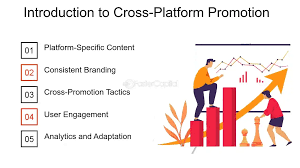Cross-Platform Synergy: Optimizing Campaigns Across Different Social Media Outlets

Its vast reach and ability to connect directly with voters make it a vital tool for any election. Campaigns must optimize their strategy across social media outlets to create a cohesive, compelling narrative that resonates with diverse audiences.
This approach is cross-platform synergy, where different channels work together harmoniously to amplify the campaign’s message, reach more voters, and drive engagement.
The Importance of Cross-Platform Strategy
With the proliferation of social media platforms, from Facebook and Twitter to Instagram, TikTok, and LinkedIn, each platform has carved out its niche, attracting different population segments. Each platform offers unique features, from Twitter’s quick updates to Instagram’s visual storytelling or TikTok’s viral video trends. To maximize a campaign’s impact, it is essential to tailor content and engagement strategies to fit the strengths of each outlet while ensuring a unified message. This strategy leads to a cohesive digital presence where all platforms feed into one another, strengthening the overall campaign narrative.
A well-executed cross-platform strategy helps campaigns engage with various voter demographics. Younger voters are more likely to engage with TikTok videos, while older demographics prefer the familiarity of Facebook or Twitter for in-depth discussions. By optimizing content for each social media channel and ensuring that all platforms amplify the same core message, campaigns can effectively communicate with voters from all walks of life.
Tailoring Content for Each Platform
To achieve synergy, the first step is creating content that speaks to each platform’s unique features and audience preferences. On Twitter, for example, concise, impactful messages or responses to trending political hashtags can drive conversations. Twitter’s rapid-fire, real-time nature makes it perfect for quick updates, news, and engaging directly with followers. Here, a campaign might post regular updates, respond to voter questions, and share brief policy points that prompt interaction.
Infographics, images, and short videos showcasing a candidate’s personality, behind-the-scenes moments, or key policy initiatives can build an emotional connection with voters. Instagram Stories and Reels, designed for short bursts of engaging content, can highlight personal stories or quick, digestible policy messages, offering voters a deeper, more personal connection to the candidate.
With its viral appeal, TikTok calls for a more playful and creative approach. Short, engaging videos—often infused with humor or trending challenges—can quickly capture the attention of younger voters.
While slightly more traditional, Facebook remains an essential platform for political campaigns due to its large, diverse user base. This platform is ideal for longer posts, videos, and discussions about complex policies. It allows candidates to engage in detailed conversations and foster community discussions. On Facebook, campaigns can share links to longer-form content like articles, debates, interviews, and policy papers. Additionally, Facebook groups can serve as a forum for supporters to discuss policies, share content, and organize events.
Often associated with professionals, LinkedIn can be a unique platform for political campaigns to focus on policy discussions and economic plans. This is an opportunity for campaigns to engage voters who prioritize economic development, job creation, and business-oriented policies. Posts that feature endorsements from industry leaders, detailed plans for job creation, or strategies for economic growth can help build credibility and attract a professional voter base.
While the content may vary across these platforms, the key is to maintain consistent messaging that aligns with the campaign’s core values and goals. Whether the content is a tweet, a Facebook post, a TikTok video, or an Instagram Reel, the central message should stay the same: the candidate’s vision, stance on key issues, and why they are the right choice for the electorate.
Engaging Followers Across Platforms
Creating content is only half the battle—engagement is where true cross-platform synergy lies. To maximize a campaign’s impact, it’s not enough to simply post and hope that the message gets through. Campaigns must actively engage with followers, answer questions, and participate in conversations across all social media platforms.
One effective way to create engagement is through consistent interaction. Responding to comments, retweeting supporters, liking and sharing posts, and hosting live Q&A sessions or town halls can keep the conversation going. For example, engaging with trending topics or responding directly to voters’ concerns on Twitter can help increase visibility and create a sense of community around the candidate.
These interactive sessions allow campaigns to address pressing issues, clarify policy positions, and answer voter concerns. By encouraging viewers to ask questions, campaigns create an inclusive atmosphere that values voter input.
Another way to engage followers is by sharing user-generated content. Encouraging supporters to share their own stories, photos, and videos in support of the candidate boosts engagement and strengthens the sense of a grassroots movement. User-generated content can be shared across all platforms, creating a sense of shared purpose and enthusiasm for the campaign.
A video posted on TikTok can be shared on Instagram, and the conversation sparked on Twitter can be expanded through a detailed Facebook post. By promoting content from one platform to another, campaigns can direct their audience from one outlet to another, ensuring their message reaches as many people as possible.
Consistency and Brand Voice
Campaigns must maintain consistency in their brand voice to achieve synergy across platforms. Every post, comment, and message must reflect the candidate’s values, principles, and tone. Whether it’s a fun TikTok dance, a serious discussion on Facebook, or a rallying cry on Twitter, the candidate’s voice should remain authentic and aligned with their overall message.
Brand consistency across platforms builds trust and recognition among voters. If a campaign is inconsistent—switching from casual humor on one platform to overly formal rhetoric on another—it can confuse voters and undermine credibility. A clear, consistent voice helps voters understand who the candidate is, what they stand for, and what they will deliver if elected.
